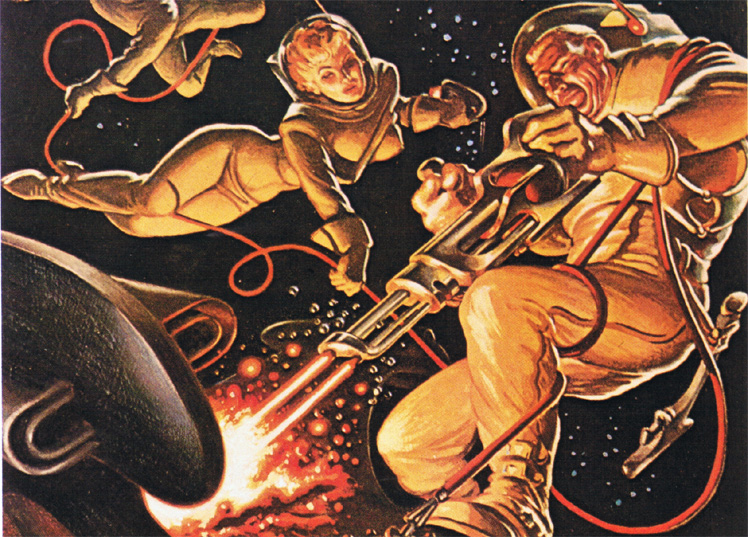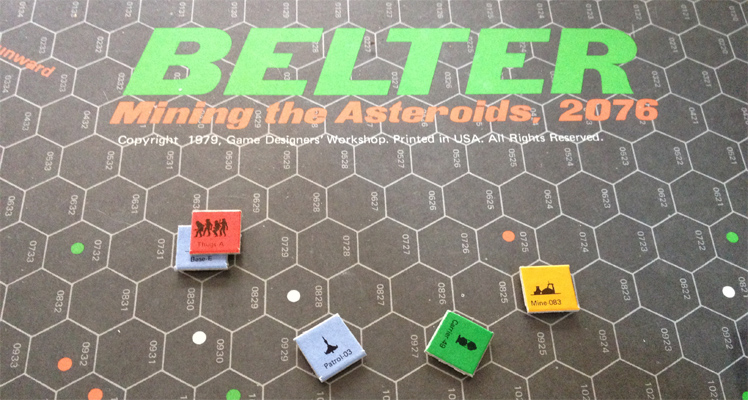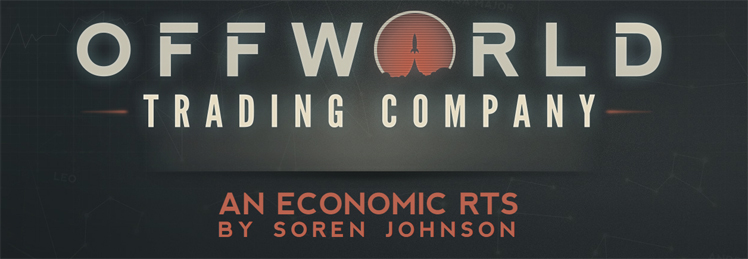
Designs that reject a genre’s fundamentals are like counterfactual history: what if things had happened this way? Rails Across America was just this kind of gem: a brilliant streamlined rethink of the rail tycoon genre that encouraged bold expansion, dirty tricks, and wild gambles, all because it focused on the broader decisions of rail empire building (where to build, how much to borrow, when to upgrade) rather than just how many barrels of peat moss and ochre jelly you could fit onto your 4-4-2 Iron Duke steam engine. There was a lot going on under the hood with passengers and cargo and switching stations, but you dealt with it in a very general way. This de-emphasis of micromanagement made the game ideal for multiplayer, and the combination of a real-time map interrupted by cardplay made the whole thing feel like a smooth-flowing boardgame fusion that could only be realized digitally. Sadly, the market for boardgame fusions wasn’t that great at the time, and developer Flying Labs moved on to try their hand at piracy MMOs.
Soren Johnson must have been working on the railroad, because Offworld Trading Company, his re-imagination of a 30-year-old boardgame* about space mining, sure feels a lot like Rails Across America. It feels a bit like 1830, too. And Acquire. In fact, it feels like a lot of things other than a real-time strategy game. Because like Flying Labs’ streamlined masterpiece, it’s all about where to build, how much to borrow, and when to upgrade. In doing so, it takes the detailed simulation of an economic sim and covers it with something that I’m not sure what it is. In concept it’s brilliant.
The idea is that after an intense, intrigue-filled sci-fi backstory that for simplicity’s sake doesn’t appear anywhere in the actual product, you land on Mars to found a colony and exploit its resources. Your tools are buildings, each of which extracts or produces different things. Your limitations are money (due to historical accuracy) and claims. The latter is a mechanic a bit reminiscent of M.U.L.E. that really just limits the number of buildings you can build. Buildings require power, and colonies require food, and even though you might really want to build a glass factory right now, it might not make sense if you don’t have a way of getting silicon and oxygen (the precursor resources). Upgrading your colony gets you additional claims. So does buying claims at auction. Upgrading costs resources. Buying claims costs money.
That all sounds like a pedagogic presentation of the mundane reasons ExxonMobil makes you pay so much for gas. But Offworld Trading Company actually paces you through a tense competition for the ability to market your goods to offworld customers. The game progresses through stages, as your colony gets bigger and bigger, until you can build the rockets that send your spoils off to the bazaars of Io and Titan. I assure you that last part is in the hypothetical backstory. In between, you build structures on a hex grid and monitor their output while keeping an eye on the commodity market, and another on stocks, and a third on your neighbors. I mean, it is science fiction.
The key to Offworld Trading Company is that there are no building dependencies. That means that if you have enough resources to build something, and you have an available claim, there it goes. The corollary to this is that if you don’t have enough resources to build something, you can maybe buy them.** After all, this is a market-based economy. This leads to a deliciously uneasy equilibrium: players with an excess of resources want to sell them into the market, but by doing so risk lowering the commodity price to a point where other players can buy it more cheaply than they could by producing it themselves. There is a dynamic market price for everything. You can even manipulate surpluses or shortages (using hackers, if you pay them).
The result is a keen balance between expansion, development, and tycoonism. (Guaranteed to be a word by the time the century rolls around in which this game is set.) Resources are distributed across the map and are visible to everyone,*** so establishing your claim is a combination of reflexes and proximity. Mohawk has built distance into the equation without active movement: claims are established by drones flying from your colony, so even if you claim a resource first, you can be pre-empted by an opponent whose colony is closer to the spot. And once you have the claim and are mining away, you will need to transport your resources back to your colony to process or sell them. The further away your mine is, the longer it takes for the shuttle to get there, and the more fuel it uses. A rich vein of minerals far across the map can be less useful than a poor source that is adjacent to you.
Resources aren’t just for exploitation: they’re essential to keeping your colony alive. Energy, water, food, and fuel are requirements, and if you don’t have them, you’ll need to buy them at the market price. The game does this automatically for you, and the space bankers automatically lend you the money to do it. Debt depresses your stock price, and because the way to eliminate opponents is to buy them out, this makes you more vulnerable to a takeover. Each company’s stock price is constantly updated to reflect improvements and debt, and you will have to constantly watch for people buying your stock. To knock you out of the game, someone has to pay double the stock price for all the shares they don’t own (once all the outstanding shares have been purchased). This means that if you establish a big position in someone’s stock, you will have fewer shares to buy out later when you have the cash to do so (because you can’t by stock with debt). This makes the stock market the real battlefield, and you will be torn between using money for resources and using it for stock. It’s a great tension and shows how much a clever designer can do in a game without having to resort to space marines.****
Because each level of colony gives you a limited number of claims, and you need substantial resources to upgrade your colony, there are several paths to take. You can establish your food, water, and energy needs early. This will keep you out of debt, but force you to buy expensive resources to upgrade. You can establish the upgrade resources early (if you can find and extract them) and leave the survival commodities to the market, which will run up your debt and decrease your stock price. Or you can try to play the market, buy what you need cheap, sell the excess, and try to buy someone out to grab all of their assets to use.
At this point I could almost be describing a game you could play in isolation, because apart from establishing claims and buying other people’s stock, there might not be many ways to interact with other players. That is, if you were actually mining a Martian colony in real life. But Mohawk Games has built in several faux-combat mechanisms to slow down your opponents, including electromagnetic pulses or power surges to temporarily disrupt production, to mutinies which take control of a certain building’s production for a fixed period of time, to that ubiquitous presence on space trade routes: pirates. Underground nukes can take out a building entirely, forcing you to rebuild it. Each of these must be bought on the black market, which is only available at certain times, and access to which can be granted as reward or compensation for certain decisions made.
Including this kind of “combat” introduces more considerations into base building. Production bonuses accrue to buildings of a similar type that are built adjacent to each other. However, the EMPs and power surges are area-effect weapons, and clustering all your glass production together to get a big bonus just means that someone can take it all out with one EMP. Place glass factories on either side of your colony and you’ll probably always have glass being made, but you’ll be forgoing production bonuses. It’s not trivial to be without food, for example, because you’ll be forced to buy it at market prices to feed your colonists, and when food gets pricey (as it often does in the late game) you can see your debt jump and your stock fall when a power surge rips through your hydroponic gardens. These tradeoffs are a nice way of making base building meaningful.
Distance and topography aren’t forgotten. Martian terrain has slopes, craters, and weird stalagmite things that interfere with base construction, forcing you to plan your expansion and jockey for position. On a crowded map, having enough space to build future buildings is critical. Shipping resources over distance makes them vulnerable to space pirates, who are more effective the closer they are to a transport route. Playing the pirate game can be lucrative on a map where development has caused many routes to intersect, but on other maps the shipping lanes may not be dense enough to pay off. These are ways of tying resources to the physical map without forcing you to click on individual transports to send them here and then there and then here again.
Because without a link to a physical map, where are you? In an interview with Eurogamer, Soren Johnson had this to say about the
“When people start playing they’re used to thinking that they should be focusing on the map,” agrees Johnson. “If only because that’s where most RTS games are. But then they realize that the game is really in that market. You’re really playing this UI element and benefiting from what you see happening.
“Playing this UI element” is fine, but at some point a game sacrifices a lot of imaginative space if it concedes the map itself. I’ve been obsessed with the idea of building a sense of place in games, because games are really about escapism, and my preferred escapist destination is not Microsoft Excel.

So I pulled out my copy of Belter (shown above) after playing Offworld Trading Company, and was instantly transported to the world of being eleven years old. That’s a hard standard to which to hold Soren’s new game. But laying out the map, and placing the counters, all helped to establish this place where we mined the asteroids and got whacked by the magnetic sling channel, and it was all this crazy corner of space that to this day seems like somewhere I’ve visited. Games have a wonderful way of creating these spaces. And I realized that the one thing I wanted Offworld Trading Company to build was a place where I could go to exploit Mars. The game’s concept art (shown below) is wonderfully evocative, suggesting a sort of orcish despoiling of Ashenvale Forest, only in orbit. But once I start playing it, my attention is drawn to the line of numbers on the left, listing the commodity prices like some sort of Carterian Mercantile Exchange. The information I want is rarely actually on the map. It’s not like there aren’t plenty of map mechanics to consider: there are differing elevations where wind speed varies and generates variable amounts of power. The aforementioned slopes and craters can cause real base-expansion issues. But the anomalous canyons are just filler, an annoyance with no use whatsoever, because there are no resources there. They just represent space without function.

Representing space with function and keeping players’ attention on the map is tricky, because the better the interface, the easier it is to run your colony as from a console, monitoring numbers here, selling there, always focused on the resources you need for the next upgrade or the money you need to buy out an opponent. And a robust interface is essential in a game where quickly realizing that you aren’t making glass because your glass factory is out of oxygen because your electrolysis plant is not making it anymore because you are out of water, and then fixing that problem, is the key to the whole game. Because so many resources are linked, you need to keep track of a lot of things at once.
These kinds of recursively dependent variables need ruthless playtesting to get right. Right now it seems like some things aren’t worth paying for, like pirates, and some things are worth more than free speech in Russia, like any geothermal vent you might find. Soren Johnson believes in geothermal energy to the extent that the first person to find one of these rare heatspouts and build a geothermal vent thingy on it will be free of serious debt concerns throughout the entire early-/midgame. The game has all kinds of tricks and subversions, like the wonderfully inventive patent office that sells new game mechanics that break the rules: for example, a perpetual motion machine that cuts your energy expenditure by 50%, or the water engine that makes buildings run on water instead of fuel. There is a great “I drink your milkshake” patent in the form of slant drilling, in which players can access resources in an adjacent tile. I haven’t used it once, but it seems powerful.
But there are larger issues of conceptual balance that Mohawk Games will need to address. One of them is the fact that buying out another company gives you a big advantage over everyone else until they do the same. Taking over another company gives you their colony, all their buildings, and the associated production. It also increases your stock price, so that a buyout of your company suddenly becomes much more expensive. If you can get to the endgame having purchased more companies than your last opponent, you will be at a decided advantage. It’s significant enough that the game might need to always have an even number of players.
This is a familiar problem with RTS games, or really any strategy game in which you take over other players, and that is “snowballing.” Accruing advantages from eliminating another player makes you more likely to eliminate a subsequent player, and so on. When I first played it, the stock market was restricted in certain ways (you couldn’t sell stock once you’d bought it, and you didn’t take control of another company’s stakes in rivals, even if you bought that company out). The former is no longer true, but the latter still is. Soren has expressed the concern that it always makes sense to sell your stake in Company A if it allows you to buy out Company B. If buying out Company B is a good idea, I’m not sure why this is a problem, or how it is different from the current way the stock market works, either on Mars or in Manhattan. But the realities of fixed map RTS games impose their own distortions, and the goal should always be a competitive game. There is a spectacular team game in there as well, which presents its own design challenges, such as how to deal with team ownership of stock. Getting a peek at this game in development was an interesting lessons in the challenges of design.
I love designs that take established mechanics and rework them. Offworld Trading Company does a lot of that. They have also made some interesting decisions about what you can and cannot do, in an attempt to maximize the game aspect. I’ll be very interested to see how the stock market develops, and where the AI goes. But at this point, with the game still a year from release, it looks like Mohawk Games has a sophisticated, well-structured model for resource extraction on planets on which there is no central taxing authority.
I’ve spent a lot of time playing, thinking about, and discussing Offworld Trading Company. We covered it on Three Moves Ahead, and Julian Murdoch and I were apparently so full of unexpressed thoughts that we reprised this on Dirk Knemeyer’s Game Design Round Table. I express many of these thoughts there in different ways. Listen to them to get other people’s perspectives.

————————————
*One of the first posts on the Mohawk Games website stated that the original ruleset is based heavily on Belter, a boardgame published by GDW in 1979 and designed by Frank Chadwick and Marc Miller. Marc Miller also designed the seminal science fiction RPG Traveller.
**Some buildings are limited to certain colony upgrade level, but in general, buildings just need you to have amassed certain resources, which you can always buy.
***Soren has mentioned M.U.L.E. previously, and the idea of mining resources in space will always evoke that game, but whereas M.U.L.E. was all about taking a chance on a plot of land, just like a prospector, there isn’t any prospecting in Offworld Trading Company. You have perfect vision for resources.
****Don’t get me wrong, it is better to die for the Emperor than live for yourself.
*****Why aren’t there any screenshots? Mohawk Games has not given permission for disclosure of graphics until the final art is in place. Discussion of the gameplay and mechanics is not restricted.
This has less to do with Sci-fi/Offworld Trading, but just a note to say thanks, Bruce, for writing these great posts, and just so you know, people are reading them, and they are appreciated. Very absorbing!
Posted by J C | December 8, 2014, 1:23 pm